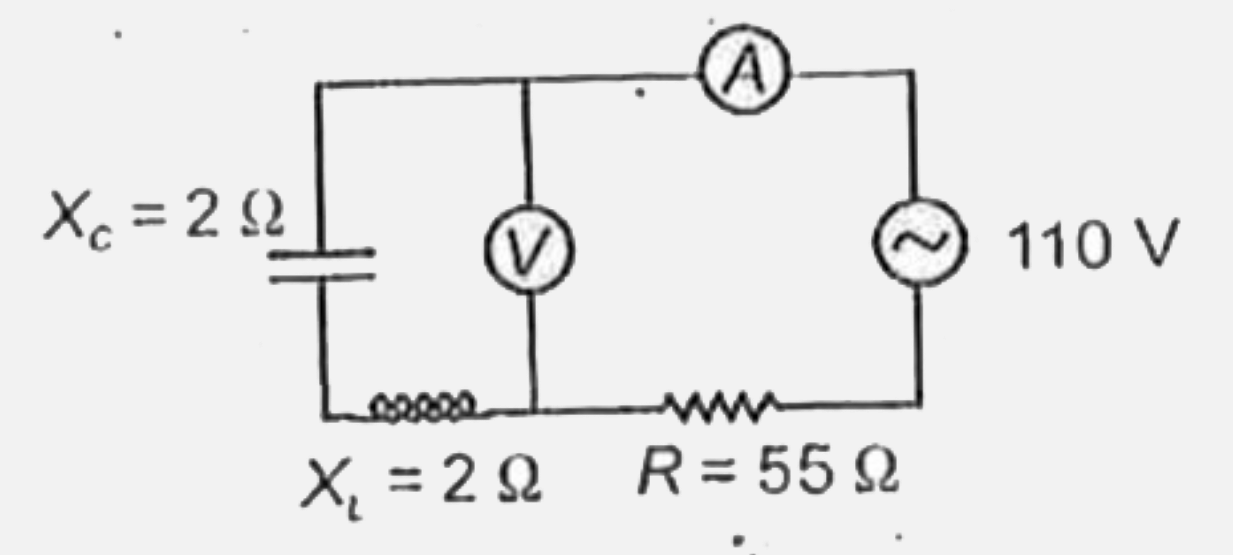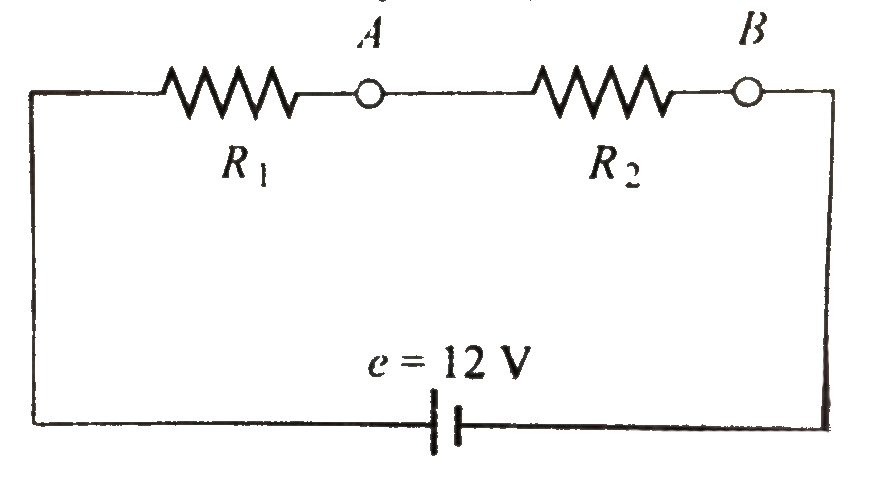(A) : An ammeter is connected in series in the circuit.
(R) : An ammeter is a high resistance galvanometer.
Both 'A' and 'R' are true and 'R' is the correct explanation of 'A'.
Both 'A' and 'R' are true and 'R' is not the correct explanation of 'A'
'A' is true and 'R' is false
'A' is false and 'R' is false
The correct Answer is:C
To solve the question, we need to analyze both the assertion (A) and the reason (R) provided.
1. Understanding the Assertion (A):
- The assertion states: "An ammeter is connected in series in the circuit."
- This is true because an ammeter is designed to measure the current flowing through a circuit. When connected in series, the same current flows through the ammeter as through the rest of the circuit components.
2. Understanding the Reason (R):
- The reason states: "An ammeter is a high resistance galvanometer."
- This statement is false. An ammeter is actually designed to have a low resistance. If it had high resistance, it would impede the flow of current, leading to inaccurate measurements.
3. Conclusion:
- Since the assertion is true and the reason is false, we conclude that the correct answer is that the assertion is true, but the reason does not correctly explain the assertion.
Final Answer:
- Assertion (A) is true.
- Reason (R) is false.
- The assertion states: "An ammeter is connected in series in the circuit."
- This is true because an ammeter is designed to measure the current flowing through a circuit. When connected in series, the same current flows through the ammeter as through the rest of the circuit components.
- The reason states: "An ammeter is a high resistance galvanometer."
- This statement is false. An ammeter is actually designed to have a low resistance. If it had high resistance, it would impede the flow of current, leading to inaccurate measurements.
- Since the assertion is true and the reason is false, we conclude that the correct answer is that the assertion is true, but the reason does not correctly explain the assertion.
- Assertion (A) is true.
- Reason (R) is false.
Topper's Solved these Questions
- BOOK - AAKASH SERIESCHAPTER - MOVING CHARGES AND MAGNETISMEXERCISE - EXERCISE-II79videos
MOVING CHARGES AND MAGNETISM
- BOOK - AAKASH SERIESCHAPTER - MOVING CHARGES AND MAGNETISMEXERCISE - EXERCISE-III49videos
MOVING CHARGES AND MAGNETISM
- BOOK - AAKASH SERIESCHAPTER - MOVING CHARGES AND MAGNETISMEXERCISE - EXERCISE-IA142videos
MOVING CHARGES AND MAGNETISM
- BOOK - AAKASH SERIESCHAPTER - MOTION IN A STRAIGHT LINE EXERCISE - very Short answer type question15videos
MOTION IN A STRAIGHT LINE
- BOOK - AAKASH SERIESCHAPTER - NUCLEAR PHYSICSEXERCISE - ADDITIONAL PRACTICE PRACTICE SHEET (ADVANCED) Integer Type Questions3videos
NUCLEAR PHYSICS
Similar Questions
Which statement/statement is/are correct?
1. An ammeter is connected in series in a circuit and a voltmeter is connected in parallel.
2. An ammeter has a high resistance.
3. A voltmeter has a low resistance.View SolutionAn ammeter is always connected is series in a circuit because........
View SolutionStatement A: Ammeter is a low resistance galvanometer
Statement B: Voltmeter is a high resistance galvanometer
Read the above statements and chose the correct option given belowView SolutionA battery of emf 2 V and internal resistance r is connected in series with a resistor of 10Ω through an ammeter of resistance 2Ω. The ammeter reads 50 mA. Draw the circuit diagram and calculate the value of r.
View SolutionBy mistake, a voltmeter is connected in series and an ammeter is connected in parallel, with a resistance in an electrical circuit. What will happen to the instruments?
View SolutionAn ammeter is connected to measure the current intensity in a circuit with a resistance R. What relative error will be made if connection of the ammeter does not change the current intensity in the circuit? The voltage across the ends of the circuit is kept constant.
View Solution(A) : If a galvanometer is converted into an ammeter and a milliammeter then the shunt resistance of ammeter is lower than that of milliammeter.
(R) : In Ammeter the current through shunt is less than that of galvonameter as compared to the case of milliammeter.View SolutionThe reading of ammeter in the circuit is
 View Solution
View SolutionWhy is ammeter connected in series and voltmeter in parallel in the circuit?
View SolutionWhen an ammeter of negligible internal resistance is inserted in series with circuit, it reads 1A. When a voltmeter of very large resistance is connected across R1, it reads 3V. But when the points A and B are short-circuited by a conducting wire, then the voltmetre measures 10.5V across the battery. The internal resistance of the battery is equal to
 View Solution
View Solution

